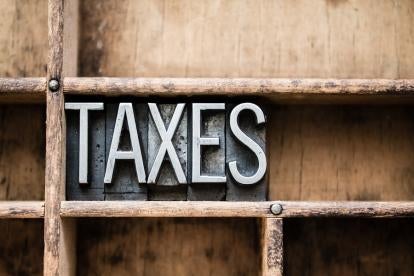1. 2024 Congressional Tax Package
On January 16, the chairmen of the Senate Finance Committee and the House Ways and Means Committee introduced the Tax Relief for American Families and Workers Act of 2024, which proposes certain changes to US tax law, including the following:
- Increasing the maximum refundable amount per child under the child tax credit.
- Continuing the increased ceiling for the low-income housing tax credit, which allows states to allocate more credits for affordable housing projects.
- Delaying the date when taxpayers must begin deducting their domestic research or experimental costs over a five-year period, and allowing taxpayers to currently deduct domestic research or experimental expenditures that are paid or incurred before January 1, 2026.
- Extending 100% bonus depreciation.
- Barring employee retention credit claims made after January 31, and extending the statute of limitations to six years with respect to employee retention tax credit claims.
As of the publication date of this article, the prospect of these proposed changes becoming law remains uncertain. However, they signal serious interest on Capitol Hill on making at least some revisions to the tax code, even in the midst of an election year.
2. 2024 US Presidential Election
As the 2024 campaign season continues, each candidate’s tax policies are beginning to come into focus. Adding further fuel to the debate, several significant portions of the 2017 Tax Cuts and Jobs Act (TCJA) are set to expire starting at the end of 2025. Both the Democrats and the Republicans want at least certain portions of the TCJA to be extended, and the results of the 2024 election will likely have a significant impact on which provisions survive.
Notable provisions of the TCJA that are set to expire include the following:
- Reduction of marginal tax rates for individuals and families. The top marginal rate is currently 37%, while the pre-TCJA rate was 39.6%.
- Increase in the individual charitable contribution deduction limit. The current limit is 60% of adjusted gross income, while the pre-TCJA limit was 50%.
- State and local tax deduction limitation for individuals. The current limit is $10,000, but once the provision expires, no limit will apply.
- Pass-through business income deduction. Currently, taxpayers are entitled to a deduction equal to 20% of qualified business income. Once the provision expires, taxpayers will not be entitled to a deduction.
- 100% bonus depreciation for certain capital property. The ability to claim 100% bonus depreciation started phasing out after 2022 and will decrease by 20% each year until it phases out completely in 2027.
- Qualified Opportunity Zones. Taxpayers may currently defer, and possibly exclude, capital gains from income if the gains are invested in certain “qualified opportunity zones.” Without renewal, new investments in opportunity zones will no longer be eligible for these benefits.
The candidates are taking varying approaches in their tax policies. Many of the candidates have incorporated the renewal of expiring provisions of the TCJA into their platforms. Policies advocated by certain candidates include the following:
- Joe Biden is seeking to increase corporate, individual, and capital gains tax rates, while also increasing tax credits and expanding the tax base.
- Nikki Haley is focusing on eliminating the federal gas tax, increasing child tax credits and making the small business relief aspects of the TCJA permanent. Additionally, Haley wants to disallow the state and local tax deduction and repeal subsidies introduced in the Inflation Reduction Act.
- Donald Trump has proposed a universal baseline tariff on all US imports, with a special tariff on imports from China. Trump also wants to make many provisions of the TCJA permanent.
We expect that the varying policies will have a significant influence on investment decisions and structures in 2024.
3. IRS Enforcement Efforts
On August 16, 2022, the Inflation Reduction Act was enacted, providing the US Internal Revenue Service (IRS) with an $80 billion budget increase.[1] On September 8, 2023, the IRS issued News Release IR-2023-166 (updated by IR-2024-09), which announced its goal to shift more audit attention onto high-income earners, partnerships, large corporations, and promoters aggressively peddling abusive schemes. Specifically, the IRS intends to focus its audit efforts on high-income taxpayers with total positive income above $1 million and more than $250,000 in recognized tax debt, as well as partnerships with over $10 million in assets that have identified discrepancies on their balance sheets.
Additional priority areas for the IRS include (1) digital assets (as part of the Internal Revenue Service Virtual Currency Compliance Campaign), (2) egregious non-compliance with Foreign Bank and Financial Accounts (FBAR) requirements, (3) proper employment tax withholding for vulnerable workers, and (4) continued work to combat emerging scams and schemes.
The IRS intends to utilize artificial intelligence (AI) to help improve detection of tax cheating, identify emerging compliance threats, and improve case selection tools to avoid burdening taxpayers with needless “no-change” audits. See more of our commentary on increased enforcement efforts here.
4. The Employee Retention Tax Credit
During the latter part of 2023, the IRS issued various commentary and guidance demonstrating its increased enforcement efforts with respect to taxpayers who have received an employee retention tax credit (ERTC), have claimed an employee retention tax credit, and may claim an employee retention tax credit.
On September 14, 2023, the IRS issued News Release IR-2023-169, which instated a moratorium on the processing of new employee retention tax credit claims until December 31, 2023 (such moratorium has since been extended and a specific resumption date for processing employee retention credit claims submitted after September 14, 2023, has not been determined). During such moratorium, the IRS continues to review previously filed employee retention tax credit claims, but such claims are subject to a detailed review. In their News Release, the IRS also stated that the IRS Criminal Investigation Division is actively working to identify fraud and promoters of fraudulent claims for potential referral for prosecution to the US Department of Justice and that the IRS had already uncovered suspected fraud totaling more than $8 billion, resulting in the initiation of 252 investigations.
On October 19, 2023, the IRS provided details of the procedures for a taxpayer to file a request to withdraw its employee retention tax credit claim. Employee retention tax credit claims that are withdrawn will be treated as if they were never filed and no interest or penalties will be imposed on the taxpayer.
Further, on December 21, 2023, the IRS provided details of the procedures for a taxpayer to file an application to participate in the Employee Retention Credit Voluntary Disclosure Program. Under this program, a taxpayer who has improperly filed for an employee retention tax credit is required to repay only 80%of such credit and no interest of penalties will be imposed. Applications to participate in the Employee Retention Credit Voluntary Disclosure Program must be submitted by 11:59 p.m. local time on March 22, 2024.
See our commentary on the IRS employee retention tax credit withdrawal program here and the voluntary disclosure program here, subject to modifications discussed here.
5. Pillar II
The Organisation for Economic Co-Operation and Development (OECD) has recommended that rules described under “Pillar Two” come into effect in 2024. The European Union and several other jurisdictions intend to introduce Pillar Two rules into their domestic laws in 2024 and other jurisdictions plan to follow in 2025.
The Pillar Two rules establish a common approach for a global minimum tax of 15% for multinational corporations with revenue of more than 750,000 EUR. The rules consist of model rules introduced by the OECD Inclusive Framework on Base Erosion and Profit Shifting in December 2021, with further guidance released in 2022 and 2023. The rules are designed to ensure that such enterprises pay a minimum level of tax in each jurisdiction where they operate and would apply in addition to existing domestic corporate taxation.
The United States has not adopted key components of the Pillar Two Model Rules. President Biden has announced plans to replace the Base Erosion and Anti-Abuse Tax with a global minimum tax consistent with the OECD Pillar Two Model Rules as part of his 2024 campaign platform, but such initiatives are still uncertain in light of the upcoming election (and would require action by Congress). Regardless of whether the United States introduces its own set of Pillar Two rules, the rules are expected to impact US and foreign multinationals. Specifically, the Pillar Two rules may limit tax planning, increase effective tax rates on cross-border investment (particularly earnings in low-tax jurisdictions), impact global operations and prospective foreign direct investment, and introduce additional complexity and reporting requirements.
6. Green Energy Tax Credits
The Inflation Reduction Act modified tax incentives under sections 45 (production tax credit) of the Internal Revenue Code (Code), 48 (investment tax credit), 25C (energy efficient home improvement credit), 25D (residential clean energy credit), 45L (new energy efficient home credit), 179D (energy efficient commercial buildings deduction), 30D (clean vehicle credit), and 48C (advanced energy project credit), and created new tax incentives under sections 45U (zero-emission nuclear power production credit), 45W (commercial clean vehicle credit), 45V (production of clean hydrogen credit), 45Y (clean electricity production credit, which is intended to supersede the section 45 production tax credit after 2024), 48E (clean electricity investment credit, which is intended to supersede the section 48 investment tax credit after 2024), 25E (credit for previously owned clean vehicles), and 45X (advanced manufacturing production tax credit).
The Inflation Reduction Act also included several credit enhancements, also referred to as “adders” (i.e., low-income community adder, prevailing wage adder, apprenticeship adder, domestic content adder, and energy community adder) and credit monetization under sections 6417 (i.e., direct pay) and 6418 (i.e., transferability).
The IRS has requested comments from interested parties with respect to many of the above-mentioned Code sections. The IRS has also issued a considerable amount of guidance since Congress adopted the Inflation Reduction Act, and we expect to see additional guidance issued by the IRS and the US Department of the Treasury on these Code sections in 2024.
7. IRS Information Reporting
In November 2023, the IRS announced a delay of the new Form 1099-K reporting threshold of $600 for third-party settlement organizations for calendar year 2023 (affecting the 2024 filing season). Additionally, the IRS has announced plans for a reporting threshold of $5,000 in 2024, as opposed to the $600 threshold required by law. However, until the plans are formalized, the reporting requirements are still in flux.
Prior to 2021, the Code required third-party settlement organizations, like PayPal and Venmo, to send Forms 1099-K to payees that received more than $20,000 in a year and had more than 200 transactions during the year. Under the American Rescue Plan Act of 2021, that threshold was significantly reduced. Currently, the Code, without regard to the IRS delay, would require third-party settlement organizations to send a Form 1099-K to payees that receive more than $600 in the aggregate (without regard to the number of transactions entered). As these requirements apply to the casual sale of goods and services, like the sale of used personal items (e.g., furniture), a much broader range of transactions will be covered.
8. Moore v. United States
The US Supreme Court is expected to issue a decision in Moore v. United States in 2024. In Moore, the taxpayers challenged the mandatory repatriation tax enacted as part of the 2017 Tax Cuts and Jobs Act that requires US shareholders of controlled foreign corporations to pay a one-time charge on previously taxed earnings of the foreign corporation regardless of whether the shareholders received a distribution of such earnings. The case implicates the constitutionality of taxing unrealized income. A number of tax provisions could be called into question depending on how the Supreme Court rules in this case. See our discussion of the Moore case here.
9. Loper Bright Enterprises v. Raimondo
Also in 2024, the US Supreme Court is expected to issue a decision in Loper Bright Enterprises v. Raimondo, which may implicate the ongoing vitality of Chevron deference to agency rulemaking. Through Loper Bright, a group of fisheries is challenging the National Marine Fisheries Service’s interpretation of a US federal law that requires certain fisheries to allow observers onboard their vessels as part of efforts to reduce overfishing. The Chevron doctrine, named for a 1984 Supreme Court decision, provides that courts generally should defer to an agency’s, such as National Marine Fisheries Service’s, interpretation of ambiguous statutes.
Although Loper Bright Enterprises does not involve an ambiguous US Treasury Department regulation, the Supreme Court’s decision could impact the degree of deference provided to such regulations. This is due to the 2011 decision in Mayo Foundation v. United States, in which the Supreme Court held that Treasury regulations are subject to Chevron deference (overturning the less deferential and more nuanced standard to which such regulations had been subject before). If the Supreme Court pares back the Chevron doctrine in Loper Bright, it could open the door for more challenges to Treasury regulations.
10. Farhy v. Commissioner
The DC Circuit Court of Appeals is considering an appeal from the federal government on whether the IRS can “assess” certain reporting penalties. On April 3, 2023, the Tax Court issued its opinion in Farhy v. Commissioner, finding that the IRS was not permitted to “assess” penalties under section 6038(b) of the Code against a taxpayer who failed to file Forms 5471 for several tax years.
Generally, if a penalty is “assessed,” it means that the IRS is permitted under the Internal Revenue Code to take certain actions to collect it administratively, such as by lien or levy. While many penalties under the Internal Revenue Code are assessable by the IRS, there has been some debate as to whether the IRS is permitted to assess certain penalties, including those under section 6038. In the absence of assessment authority, the IRS instead would need to rely on civil actions to collect penalties, making the collection process more burdensome. The taxpayer in the Farhy case argued that, unlike in the case of many other penalty provisions, the federal government does not have the statutory authority to assess penalties under section 6038(b), and the Tax Court agreed.
If the Tax Court decision is upheld by the Circuit Court, it may have significant implications for the administration of certain types of penalties. Although the Tax Court decision implicates only one category of penalties, its logic could extend to a set of others (such as those imposed for certain failures to file returns with respect to foreign disregarded entities or foreign partnerships). While Farhy does not excuse failures to file the Form 5471, the methods that the IRS can use to collect penalties for such failures would be circumscribed. Some taxpayers that paid assessments for previous tax years for failures to file Forms 5471 might consider filing protective claims as the case goes through the appellate process.
“This year's tax agenda will set the table for next year's tax challenges. With the phase-out of critical features of the TCJA and looming unsustainable budget deficits, a different Congress (and potentially different Administration) will face difficult tax policy challenges that will require a balancing of revenue needs, national competitiveness, tax simplification and economic growth. Congress has baked in future tax increases that may hit the public at an economically sensitive time.
The US tax code is facing massive long-term changes that will have profound implications for business dynamism, investment, compliance, and equity. The Treasury and Congress will need to track these issues to build their capacity to respond efficiently to tax developments on the national and international stages.”
– Phil English, Former US Congressman
Footnotes
[1] We note that the IRS’s budget increase has since been amended and reduced.
Olga Bogush, Evgeny Magidenko, Samantha Overly Patel, Rachel Scott, and Jivesh Khemlani also contributed to this article.






 i
i


